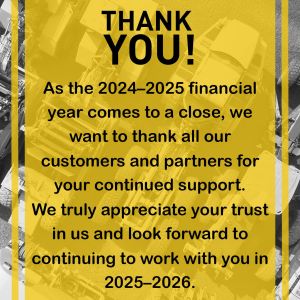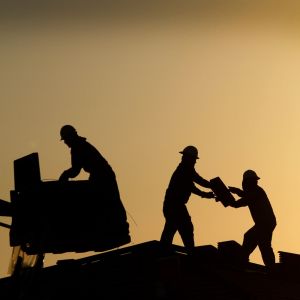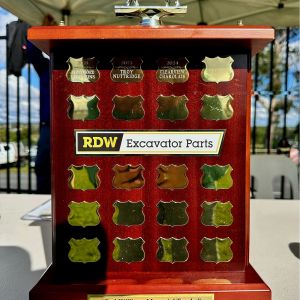Nobody can to predict where our economy is headed. It’s interesting to listen to the debates, with opinions ranging from the “Chicken Littles – the sky is falling in” doomsayers to the Eternal Optimists “we’ve hit bottom, and things can only go up”. There is no definitive answer as there are too many variables, but by reading the forecasts, we can chart a path to future prosperity.
What will happen to our Mining Industry?
Seen as the engine of Australia’s recent wealth accumulation, Mining consists of many sub-sectors. Let’s look at Thermal Coal mining as an example. Not long ago, prices were $140-150/Tonne. Production costs obviously vary, but are generally around $90/tonne. With a margin of $50/Tonne, it is easy to see why a miner would be comfortable investing many years and huge amounts of money to develop a mine. With demand far outstripping supply, the risk is worth it. However, lessons should have been learnt a few years ago when our Wine industry experienced a similar situation – most Wineries saw a supply shortage, increased their vines – but forgot to check what everyone else was doing, and didn’t factor in that we weren’t suddenly going to drink a lot more. A few years later, there was a wine glut, prices fell through the floor, and many wineries found it less costly to pull up the vines than maintain them.
Coming back to our Thermal Coal industry, Australia is not the only place mining Coal. The cost of building a Coal Mine in Australia was 16% higher than the average in the rest of the world in 2007. In 2012, the gap is now 66%. So when any mining company looks to invest in more capacity, this gets factored into the investment decision. The result? You only need to be half smart to invest in the location with the lower cost, assuming the risks are the same (which they are – Government Sovereign risk is now the same here as in many developing countries as we constantly change taxes, laws and add business Red and Green Tape). So new projects not under way already are likely to be put on hold.
What about existing mines? They won’t all close. Yet. Even though the spot prices of say $87/tonne are below the Production Costs of $90/tonne, some capacity is still contracted at higher rates. Those that can reduce their output are doing so, which helps put a floor under prices. As more mines have to take contracts at lower rates, the rate has to reach about $70/tonne before our mines close “en masse”. Why? Because during the boom, to get access to the limited Port facilities, Mines had to lock into port access contracts of between $10-15/Tonne. These charges have to be paid whether they ship or not. So whilst the mines are losing $3/tonne by still supplying, they stand to lose $10-15/tonne if they stop production. Further there is of course a cost to stop and restart production which experts estimate to be $5-10/Tonne depending on the mine and many other variables. In other words, as our mines have had extraordinary profits lately, most should have sufficient funds and can run at a loss until they run out of funding, or the price drops to about $70/tonne. What is happening though is that cost reduction has become paramount to reduce the size of the loss to allow the mines to ride out the not-so-prosperous times until prices increase again.
What about Australia’s Future? – well, most of the promised Budget surpluses on a State and Federal level rely on a profitable mining sector. In the six weeks from the Federal Budget re-forecasting to releasing the final results, Swan praises “good work money-Penny” for only being out by $660 Million. The original Budget in May 2011 predicted a Deficit (that is, spending more than you have in income) of $22.6 Billion which ended up being a $43.7 Billion Deficit (in common language know as a doubling of a huge Loss). To make matters worse, the Tax Department collected an extra $28.2 Billion in tax compared to the year before thanks to Wages inflation and the resources boom (which it’s unlikely to get again this year), but handed out an extra $11 Billion in extra welfare, and increased Operating expenses by $9 Billion. 4 years ago, Australia had no debt. We now have $174 Billion in debt, or $8,000 on the credit card per man, woman and child. I’m sure most families would have preferred to have received the roughly $35,000 in their pockets to buy a new Commodore or pay off the home loan instead of what we got for our money. As Australia’s debt is nearly completely related to spending and not investments for the future, we have no Assets for future generations to show for it. Try getting away with all of that in the business world…
What about Foreign Investment in Australia to help us along? The prospects are better in Australia than in most of the rest of the world, hence the interest from overseas businesses and Governments to buy Assets here. But we shouldn’t be selling the Assets, we should be selling Value Added product overseas. This is what the rest of the “successful” world does. They invite foreign investment to improve production efficiencies, but only as a minor partner, thereby retaining control for the future. So why are foreign interests valuing Australian businesses higher than we are when we all use the same calculators? The difference is what the investor is prepared to accept as a return, and the investment horizon they have in mind. And here is the fundamental difference. Using China as an example, they have a Vision for their country in 20 years time, and have Targets to achieve in 5 years time. They have identified Food and Raw Materials supply as a future issue, so are happy to accept a lower short term return for long term gain. Businesses in Australia can really only source funding from Banks and Shareholders, both which have a very short attention span – 12 months if you are lucky. So Australians value our businesses at today’s perceived value and make investment decisions based on the immediate return. It costs the same for a Chinese owner or an Australian owner to increase capacity in a farm or a mine. With one of the most stable banking systems in the world, what we need is a re-think on how we value businesses and how long it takes to recoup an investment. Prime examples of our short-termism are the sale of Cubbie Station (it’s about to harvest a record crop for its’ new Chinese owner, who will value add the product in China). We also haven’t understood the impact of a company like Adani, that now owns the mine, the land the mine sits on, the transport to port, the port, and the ships to send the product back to India through to the Power Station that uses the product. In the extreme, with that structure, coal could leave Australia at $1/tonne, with no taxes paid or profits retained in Australia. Now is the time for Government to invest in future infrastructure, and for businesses to invest in more efficient and productive business models. Borrowing to invest in Assets is OK, borrowing to spend is not – a lesson we should have taught everyone in high school.
So in conclusion, the sky is not falling in, but we’re in for some rough storms, and we need to adapt to a “new normal” with decreased expectations of profits and better utilisation of all available resources (assets and labour). Storms always pass, but leave a trail of some destruction, rarely quite as bad as the warnings indicate.
As always, onwards and upwards!
Fred Carlsson
General Manager



